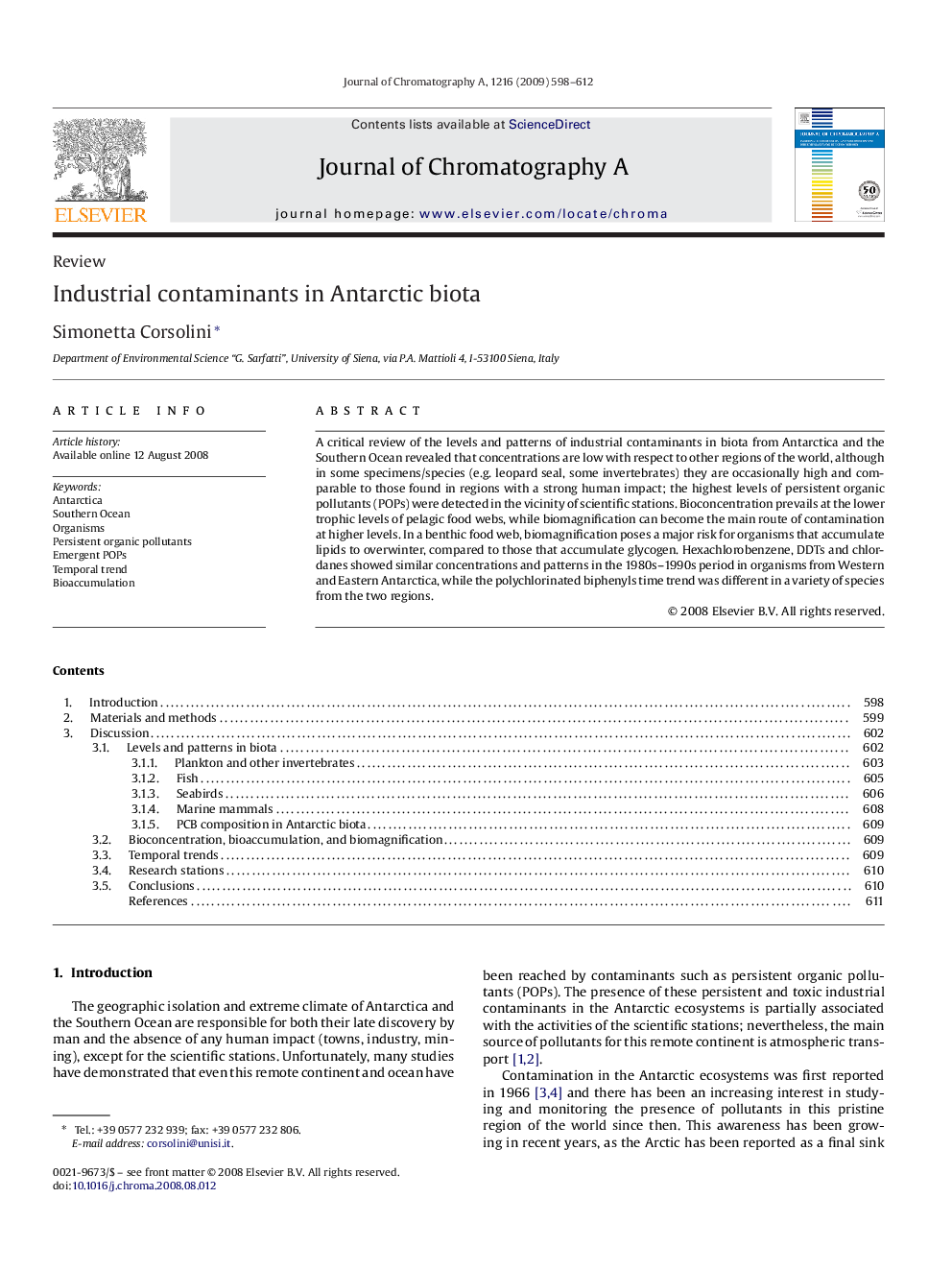| Article ID | Journal | Published Year | Pages | File Type |
|---|---|---|---|---|
| 1210779 | Journal of Chromatography A | 2009 | 15 Pages |
A critical review of the levels and patterns of industrial contaminants in biota from Antarctica and the Southern Ocean revealed that concentrations are low with respect to other regions of the world, although in some specimens/species (e.g. leopard seal, some invertebrates) they are occasionally high and comparable to those found in regions with a strong human impact; the highest levels of persistent organic pollutants (POPs) were detected in the vicinity of scientific stations. Bioconcentration prevails at the lower trophic levels of pelagic food webs, while biomagnification can become the main route of contamination at higher levels. In a benthic food web, biomagnification poses a major risk for organisms that accumulate lipids to overwinter, compared to those that accumulate glycogen. Hexachlorobenzene, DDTs and chlordanes showed similar concentrations and patterns in the 1980s–1990s period in organisms from Western and Eastern Antarctica, while the polychlorinated biphenyls time trend was different in a variety of species from the two regions.
